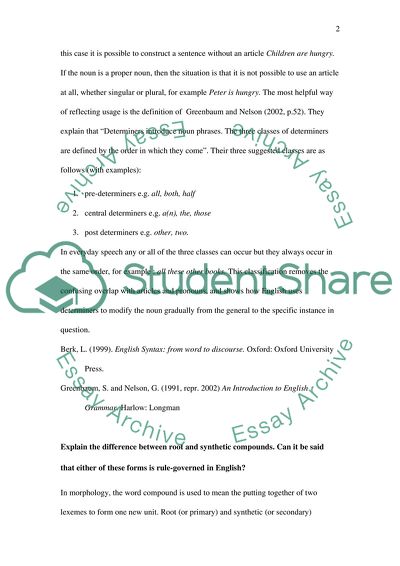Cite this document
(The Various Semantic Classes of Determiners in English Assignment Example | Topics and Well Written Essays - 1750 words, n.d.)
The Various Semantic Classes of Determiners in English Assignment Example | Topics and Well Written Essays - 1750 words. https://studentshare.org/english/1739953-ma-degree-english-grammar-and-lexis
The Various Semantic Classes of Determiners in English Assignment Example | Topics and Well Written Essays - 1750 words. https://studentshare.org/english/1739953-ma-degree-english-grammar-and-lexis
(The Various Semantic Classes of Determiners in English Assignment Example | Topics and Well Written Essays - 1750 Words)
The Various Semantic Classes of Determiners in English Assignment Example | Topics and Well Written Essays - 1750 Words. https://studentshare.org/english/1739953-ma-degree-english-grammar-and-lexis.
The Various Semantic Classes of Determiners in English Assignment Example | Topics and Well Written Essays - 1750 Words. https://studentshare.org/english/1739953-ma-degree-english-grammar-and-lexis.
“The Various Semantic Classes of Determiners in English Assignment Example | Topics and Well Written Essays - 1750 Words”. https://studentshare.org/english/1739953-ma-degree-english-grammar-and-lexis.


